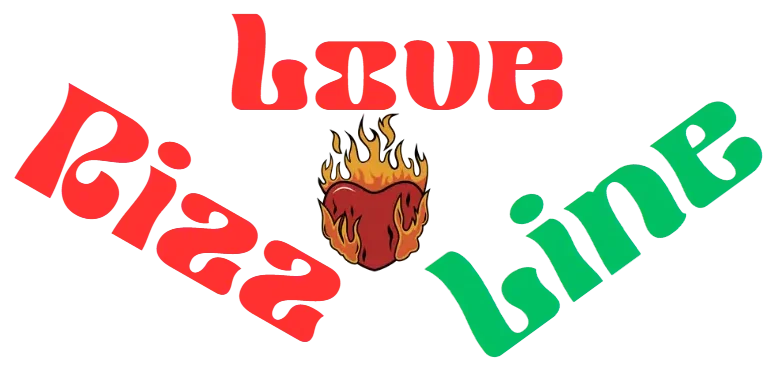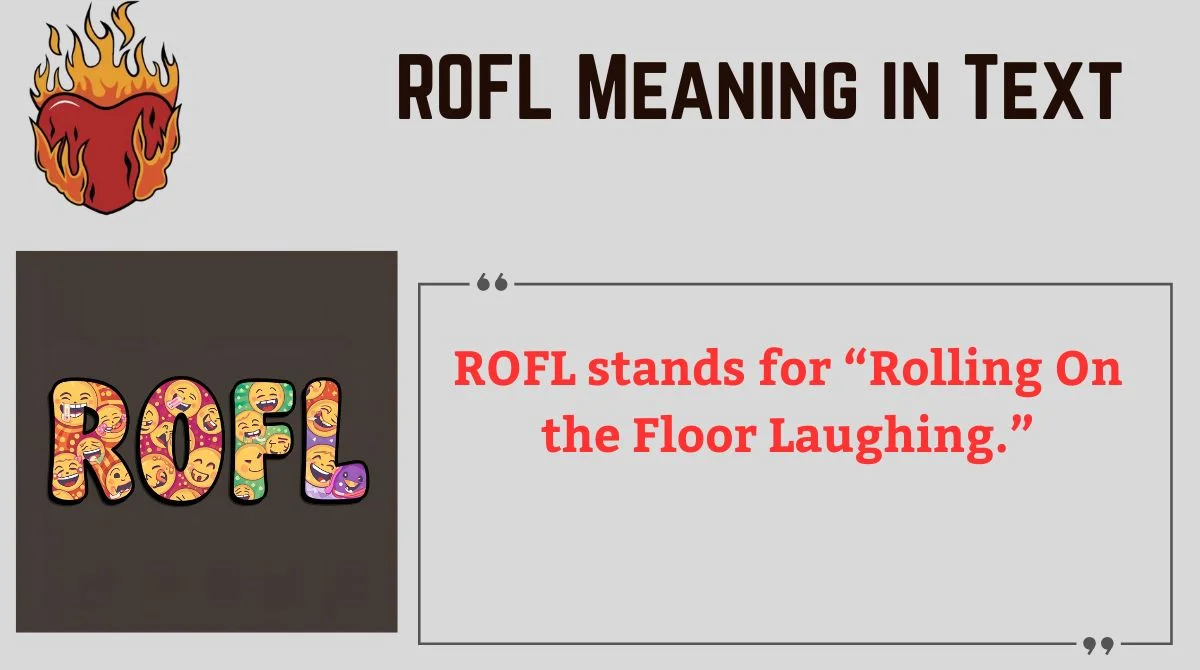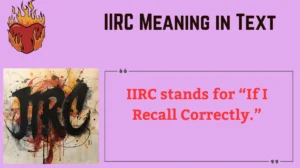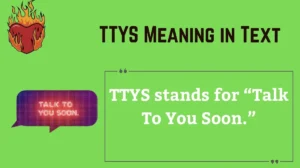Have you ever been texting a friend and received “ROFL” in response to something you said? You probably laughed—but did you really know what it meant?
In today’s fast-paced digital world, acronyms like ROFL are everywhere. Understanding them not only helps you communicate better online but also prevents awkward misunderstandings.
In this article, we’ll explore the full meaning of ROFL, its origins, how people use it in various contexts, and even some fun alternatives.
By the end, you’ll not only know what ROFL means but also how to respond confidently and appropriately in any situation.
What ROFL Stands For & Its Literal Meaning
ROFL stands for “Rolling On the Floor Laughing.”
It’s a way to express that something is extremely funny—so funny that your laughter is almost uncontrollable. While it may sound literal, you’re not actually rolling on the floor; it’s just a textual exaggeration of laughter.
Quick Fact: ROFL is considered more intense than LOL (Laugh Out Loud), making it a go-to choice for moments that genuinely crack you up.
Origins & History
ROFL has been around for decades, tracing its roots to early internet chat rooms and bulletin boards in the late 1980s and early 1990s. As online communication evolved, so did acronyms.
- 1989: Internet Relay Chat (IRC) users popularized ROFL as a shorthand for uncontrollable laughter.
- 1995-2000: It gained traction on instant messaging platforms like AOL Instant Messenger and ICQ.
- 2000s: ROFL became standard in text messaging and forums, sometimes evolving into variations like ROFLMAO or ROFLcopter.
Quote: “Internet slang like ROFL shows how digital language evolves to convey emotion efficiently.” – Linguistics Today Journal, 2022
How ROFL Is Used in Different Contexts
ROFL is versatile and can appear in many digital communication settings:
Texting Friends:
Friend: “I just saw a cat riding a Roomba.”
You: “ROFL 😂”
Social Media Posts: People often add ROFL to captions, comments, or memes to highlight humor.
Online Gaming Chats: ROFL is common when reacting to funny in-game moments.
Tone Variations:
- Genuine amusement: ROFL used without exaggeration, paired with laughing emojis.
- Sarcasm or irony: ROFL can signal mock laughter, especially in debates or online banter.
Table: ROFL vs Other Laughter Acronyms
| Acronym | Meaning | Intensity | Typical Use Case |
|---|---|---|---|
| LOL | Laugh Out Loud | Low | Casual texts, jokes |
| LMAO | Laughing My A** Off | Medium | Hilarious moments |
| ROFL | Rolling On the Floor Laughing | High | Extreme, uncontrollable laughter |
| ROFLMAO | ROFL + LMAO | Very High | Hilarious beyond measure |
Common Misconceptions
Many people misuse or misunderstand ROFL. Here are the most common misconceptions:
- Misconception 1: ROFL means you are literally rolling on the floor.
- Misconception 2: ROFL is the same as LOL. While both indicate laughter, ROFL expresses more extreme amusement.
- Misconception 3: ROFL is outdated. While less common among Gen Z, it’s still recognized globally in online communication.
Tip: Use ROFL selectively to make your reactions feel more genuine instead of automatic.
Variations and Similar Terms
ROFL has several variations that have developed over time:
- ROFLMAO: Rolling On the Floor Laughing My A* Off* – stronger than ROFL.
- ROFLcopter: Humorous exaggeration, often used in memes.
- LMAO: Laughing My A* Off* – slightly less intense but widely used.
- LOL: Laugh Out Loud – basic and casual.
Emojis often paired with ROFL: 😂🤣😹
Case Study: On Reddit, posts with ROFL or ROFLMAO in comments often receive higher engagement, suggesting that users respond positively to strong expressions of humor.
How to Respond to ROFL
Knowing how to respond to ROFL can help you keep conversations smooth and engaging:
- Option 1: Reply with a similar acronym (e.g., LMAO, 😂).
- Option 2: Share a funny meme or GIF to match the humor.
- Option 3: Continue the conversation with a witty follow-up.
Example:
Friend: “I just spilled coffee all over my keyboard.”
You: “ROFL! Did it survive the apocalypse?”
Pro Tip: Avoid overusing ROFL. If every message is ROFL, it loses impact and may seem insincere.
Regional & Cultural Differences
Humor and slang don’t translate universally. ROFL might not resonate in some cultures:
- Asia: Acronyms like ROFL are less commonly used; emojis often replace text abbreviations.
- Europe: Younger generations use it frequently, but older generations might be confused.
- Middle East: English acronyms like ROFL are popular among tech-savvy youth but less so in formal communication.
Tip: Observe your audience before using ROFL, especially in multicultural settings.
ROFL in Online Communities & Apps
ROFL is a staple in online communities and apps:
- Discord & Slack: Quick reactions in chat rooms.
- Reddit: Comments with ROFL often indicate strong engagement or humor.
- Dating Apps: ROFL can lighten conversations and show playful energy, but sarcasm should be used cautiously.
- Gaming: Fast-paced chats rely on short acronyms like ROFL to react without slowing down gameplay.
Fun Fact: Some gaming communities have created custom emojis for ROFL, like spinning laughing avatars or animated icons.
Hidden or Offensive Meanings
Although rare, some acronyms can carry misinterpretations:
- ROFL might be used sarcastically to mock someone’s statement.
- Excessive use could be perceived as immature or dismissive.
Advice: In professional or formal settings, avoid ROFL unless you know your audience well.
Suitability for Professional Communication
ROFL is generally informal, but there are situations where it can be appropriate:
- Acceptable: Casual Slack messages, friendly internal emails.
- Avoid: Client emails, formal presentations, official documentation.
Alternative professional options:
- “That’s hilarious!”
- “I found that very funny.”
- 😂 emoji (sparingly)
Table: Professional vs Casual Use of ROFL
| Setting | ROFL Use | Alternative |
|---|---|---|
| Texting friends | ✅ Acceptable | N/A |
| Slack (casual channels) | ✅ Acceptable | N/A |
| Email to clients | ❌ Avoid | “That’s funny” |
| Formal reports/presentations | ❌ Avoid | Use descriptive humor text |
FAQs
What’s the difference between ROFL and LMAO?
ROFL indicates rolling on the floor laughing, generally more intense than LMAO, which is also strong but less exaggerated.
Is ROFL outdated?
It’s less popular among Gen Z but still widely recognized in memes, forums, and casual texting.
Can ROFL be used in texting with older generations?
Yes, but older users might not immediately understand it; adding context or an emoji helps.
Are there emojis that replace ROFL?
Yes! 😂🤣😹 are commonly used and sometimes make ROFL redundant.
Can ROFL ever be offensive?
Rarely. It’s mostly casual, but sarcasm or excessive use could seem dismissive.
Conclusion
ROFL isn’t just another internet acronym—it’s a powerful way to express uncontrollable laughter online. From its origins in early chat rooms to its presence in modern social media, understanding ROFL helps you communicate clearly, respond appropriately, and even connect culturally.
Remember: context matters. Use ROFL with friends, in casual chats, and online communities—but avoid it in professional settings unless you’re certain it fits the tone.
Next time you see ROFL, you’ll not only know what it means but also how to use it effectively, making your digital conversations more fun, relatable, and engaging.

Mark Peter is the creative mind behind RizzleLineLove.com, your go-to hub for witty, flirty, and downright hilarious pick-up lines. With a passion for blending humor and charm, Mark crafts content that sparks conversations, breaks the ice, and adds a playful twist to everyday moments.
Whether you’re looking to impress your crush, make your friends laugh, or spice up your social media captions, his work is all about helping you connect — one clever line at a time.



